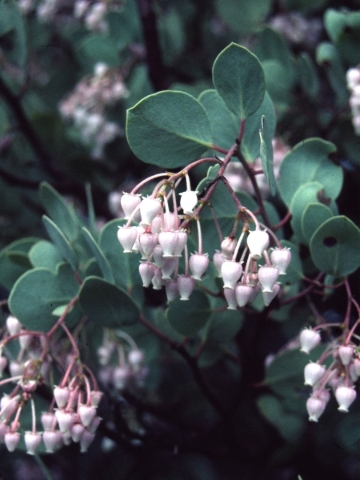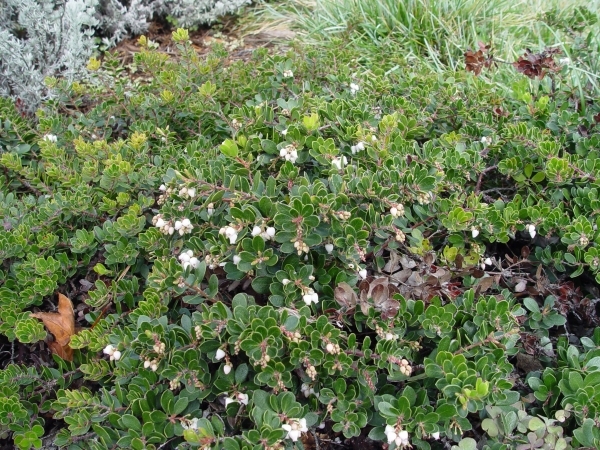Manzanita is great at drought-resistance
In the foothills of the northern Sierra Nevada, one native shrub stands out from all the rest. It is commonly called manzanita, but the name covers many different species of Arctostaphylos that make outstanding drought-resistant landscape plants for dry gardens. They range from ground-hugging mats to small trees, comprising one of the most drought-resistant plants in the inland West.
The manzanitas at 2,000 feet elevation grow among redbuds, ponderosa pine and black oaks. My ridge had been logged early in the 20th century, so by the time I arrived in the 1980s, the pine/oak forest had grown back to some extent. Here, manzanita proved the dominant species, covering huge tracts of land where they became a virtual monoculture.
I learned after wildfires why these monocultures exist. In the wake of a recent burn, most of the native trees and shrubs returned from still-living roots that survived insulated underground.
But the manzanitas are different because these are shrubs that are killed outright by fire. They return only from seed borne in small apple-shaped fruits the size of a blueberry.
That first spring after a big burn, millions of tiny manzanita seeds accumulated over a century cropped up like sparse lawn. Without competition early in the post-fire recovery process, they thrived in this abnormally high density. Perhaps nature planned it this way so manzanita becomes an important surface soil stabilizer where seedlings hold ground in the face of heavy runoff.
I am certain the same thing occurs whenever there is soil disturbance from logging, too. This is why so many areas of the west slope are monocultures today.
Over time, the seedlings thinned due to competition for moisture and shading from the oldest individuals. Then the dominant tree species, such as ponderosa pine, manages to rise up among them to create shade. Manzanita will decline as shade increases leaving thickets of lanky plants tailored for fire removal.
On the west slope, no rain falls from early May to December in most years. Our manzanitas received no water in all that time. By late summer, there is some leaf drop as they strive to reduce the demand for internal moisture. This is when their beautiful sepia-colored bark is most visible.
The normally blue-gray leaves become dull, turning their edges toward the sun to reduce direct exposure and subsequent moisture loss. Week after week they abide the heat and winds that drive wildfire season in the West.
Manzanita is perhaps the most oil-rich shrub in our ecosystem. I discovered just how oily it is during the winter when driving after a rain under moonlight. When headlights move across them, the manzanita foliage reflects this light so dramatically they glow like clouds of glittering fog while the rest of the vegetation disappears in darkness.
Locals also know manzanita wood burns so hot it can cause a chimney fire. Historic records also tell us early pioneers used manzanita wood in the blacksmith's forge before coal was available here. This is why big manzanitas in our hills are so dangerous. Once aflame, the shrub flares up as leaves burn, then those twigs and branches continue for a long time fueled by minimal moisture content and highly combustible oils.
The best manzanitas for dry gardens include the low-growing, foot-tall types that make attractive spreading plants. At higher elevations, try very cold hardy Arctostaphylos uva ursi, spreading to 10 feet in diameter. Where it's warmer, the hybrids such as A. "Emerald Carpet" are super dense featuring a rich green color.
Once established, low manzanitas become a superior drought-resistant carpet of foliage and flowers with plentiful fruit for wildlife. Just give them a bit more water over the first two summers until they're fully established, then set them free of irrigation, because Mother Nature takes it from there.
— Maureen Gilmer is an author, horticulturist and landscape designer. Learn more at www.MoPlants.com.


















